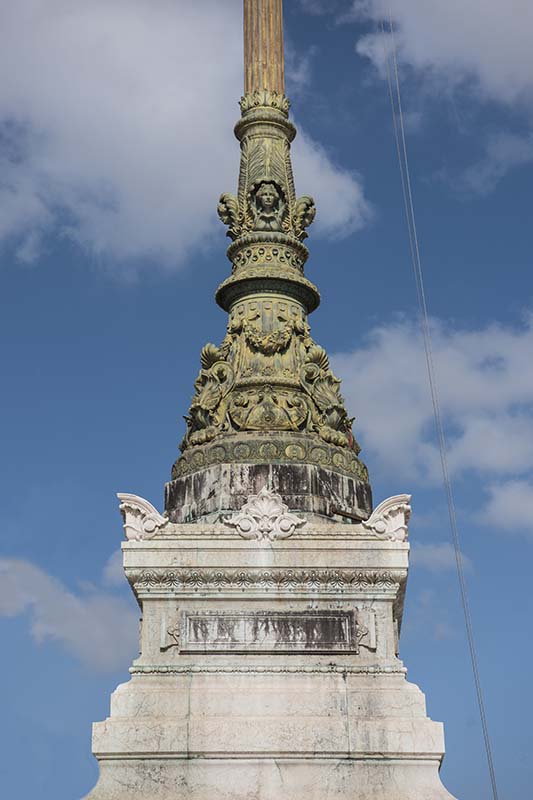Assyrian-Babylonian and classical models inspire the sculptural decoration of the monumental entrance
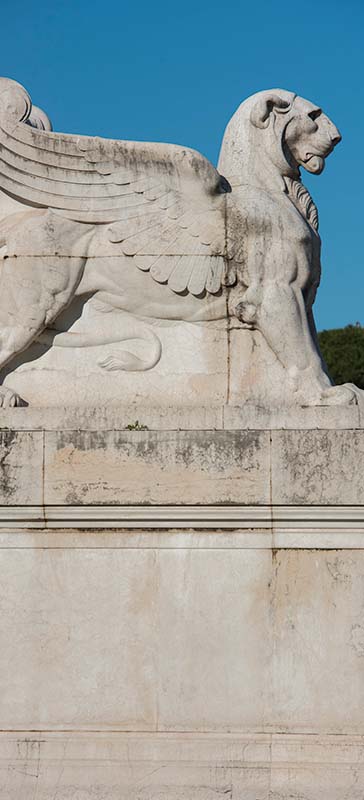
A monumental staircase with two flights connects the entrance of the Monument to the first terrace on which the Altar of the Fatherland stands. A pair of winged lions decorates the railing. The sculptor Giuseppe Tonnini from Le Marche (1875-1954) created both between 1908 and 1910. The artist was inspired by the Assyrian-Babylonian culture, which had become very popular in the Liberty era.
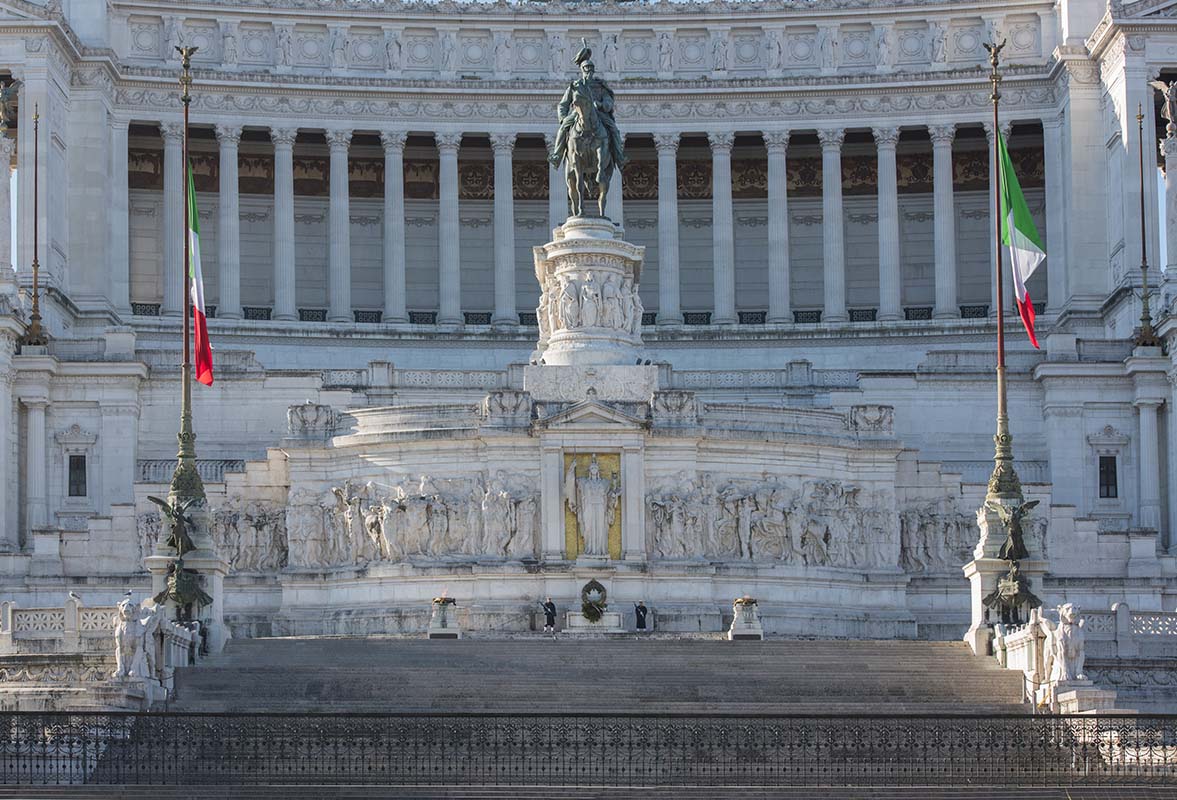
Tonnini seems to have kept in mind the representations of the Mesopotamian deity Lamassu in particular, who was depicted as a monster with the body of a winged lion. Lamassu was considered a beneficent and protective spirit. In the ancient Babylonian civilisation, its depictions were therefore usually placed in the entrance areas to royal or princely buildings: as was the case, for example, at the palace of Sargon II at Dur-Sharrukin, in present-day Iraq.
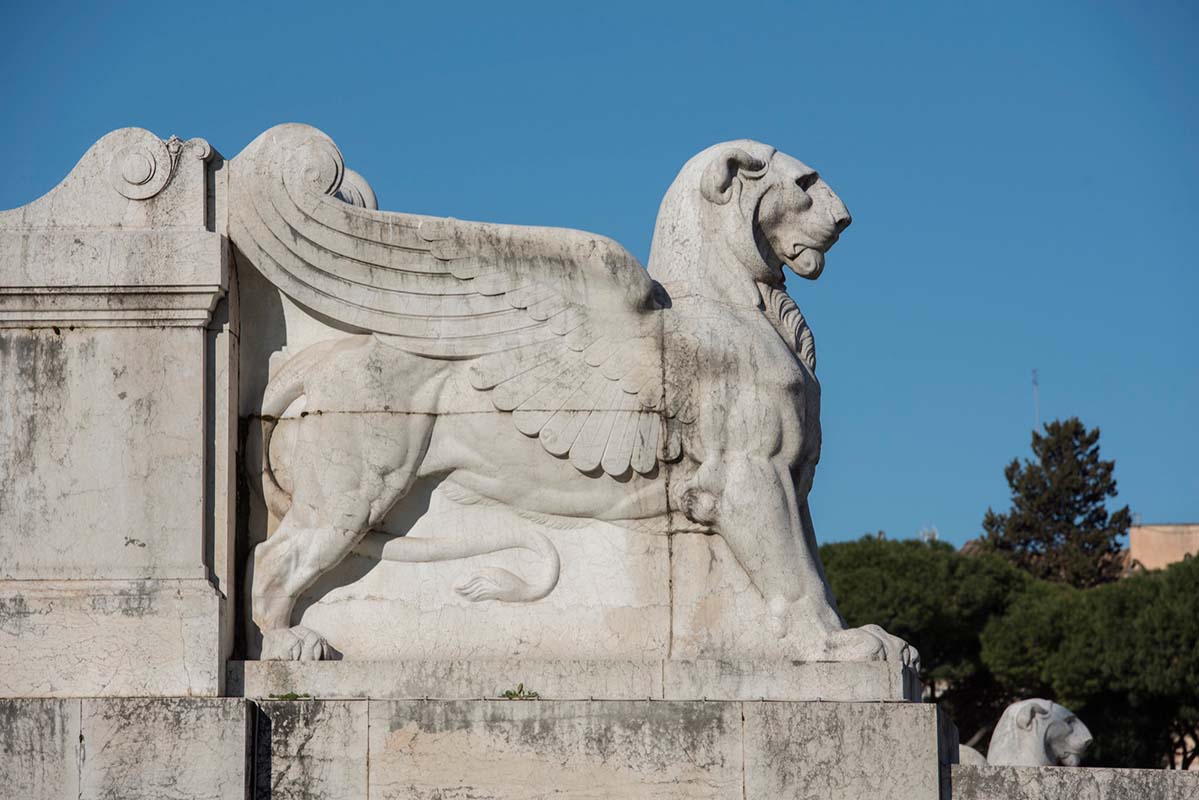
At the end of the railing stand two winged Victories in bronze made between 1908 and 1911 by two different sculptors. The Victory located on the right of the viewer is by Edoardo Rubino (1871-1954) from Turin. The Victory on the left is by Genoese Edoardo De Albertis (1874-1950). The iconography is taken from the classical world: Victory, therefore, is depicted as a young woman, with a palm in one hand and a laurel wreath in the other. Both figures rest on the prow of an ancient Roman ship, adorned with a wolf’s head and equipped with a rostrum.
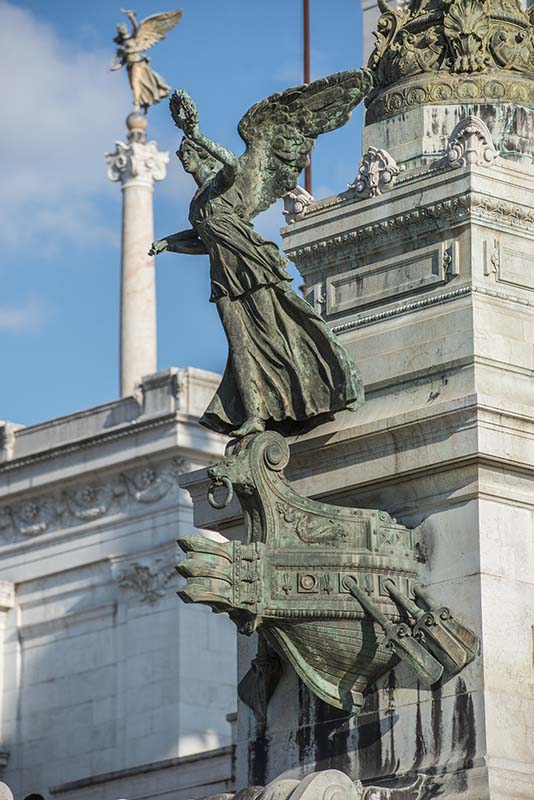
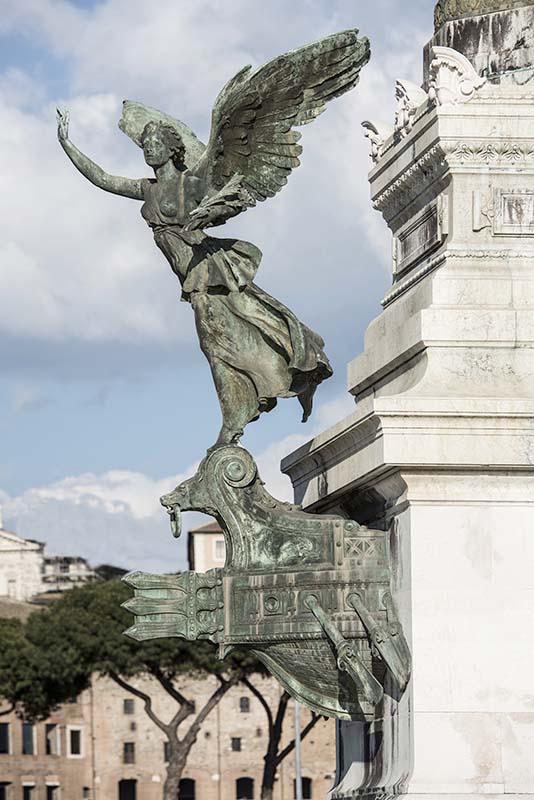
Behind each Victory stands a bronze pinnacle, made by Gaetano Vannicola (1859-1923). The pinnacle, equipped with a base decorated with festoons, culminates with an eagle.
